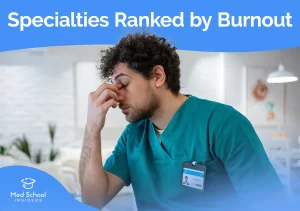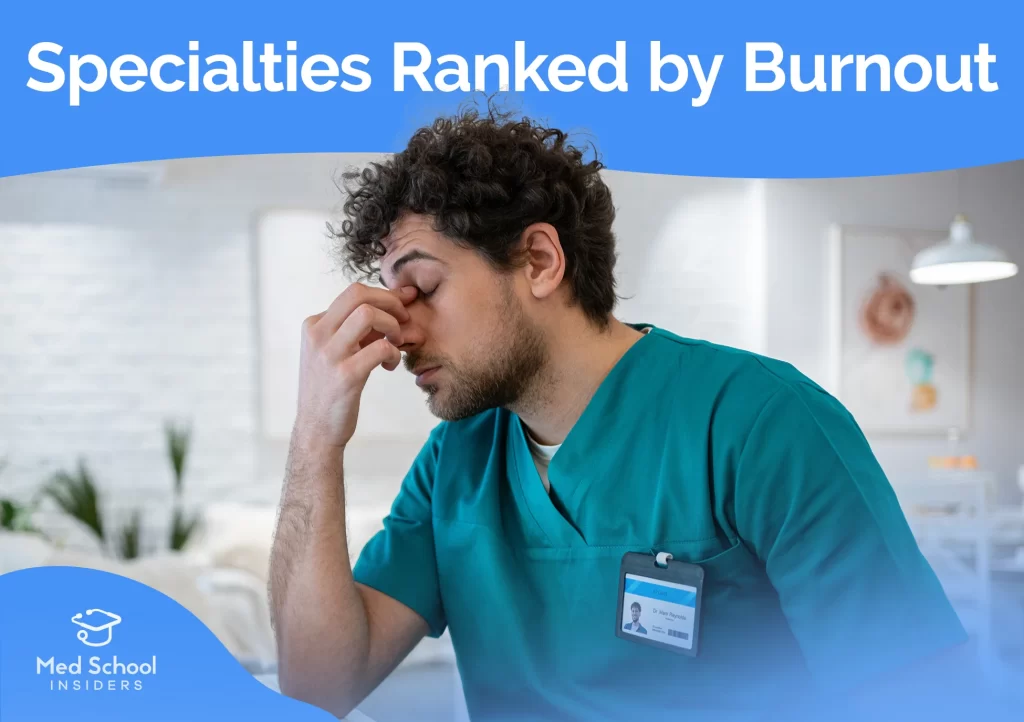“I’m so behind.” These words have been uttered by nearly every medical student, usually followed by the sound of a forehead hitting the table. We all know why: in our preclinical years, we continue to balance the full-time job of getting through lectures, small groups, anatomy labs, and doctoring courses with our overtime work of studying review books, audio lectures, question banks or flashcards (and occasionally sleep, eat, use the bathroom, and—if it’s the start of the block—go to the gym).
It doesn’t have to be this way
By tossing lecture material altogether and thereby making time for a more personalized study plan (and improved quality of life), I found that learning medicine does not need to be like drinking from a fire hose.
Stop drinking from the fire hose, and grab a can of La Croix.
In this post: 1) I share my preclinical study plan as one alternative to a primarily lecture-based curriculum, 2) I review the pros and cons of this method, and 3) most importantly, I encourage all students to think outside the box in order to truly “find what works best for you” when it comes to your education.
Alright, so how did you do it?
First, I gathered all the resources I had found to be helpful — textbooks, review books, videos, audio lectures, and question banks. This next step is key: I put them in order based on level of detail and complexity. Here is my own example:

Second, for each organ system-based block, I practiced the same sequence of going through these resources. I’ll use cardiology as an example. I first did one quick pass through a physiology resource – i.e. the Costanzo Physiology cardiology chapter. Then I did one pass of every Pathoma video for cardiology, because I felt this was the easiest pathology resource to understand. Now that I had a basic grasp of major cardiology topics after minimal time spent studying, I tackled a slightly more detailed pass by going through my next resource – in my case it was Goljan’s Rapid Review cardiology chapter. I continued multiple passes of cardiology topics, following my order of resources I had laid out previously. Each pass reinforced what I learned previously, while also teaching me something new — all within the context of the more foundational concepts I had already solidified.
What do I mean by “doing a pass?” In my case, I took notes each step of the way, continuously adding new information to the same set of notes. I bolded any information that came up in multiple resources to emphasize the fundamental points. I added images to my notes where helpful. I even took notes on new information I learned from question banks and answer explanations. Since I was no longer going off my lecture topics, I chose to organize my notes according to the list of Step 1 topics on the USMLE website. How I chose to structure my notes is another blog post altogether, but needless to say, it is about what works best for you. By the end of the block, I had a solid set of notes that I was very familiar with because I had reviewed each of its topics every time I did another pass using a different resource. I ended up using these notes to study for Step 1 because it was all high yield USMLE-relevant information.
This is by no means the only way to self-study, of course. The key point is that having minimal lectures freed up my time to review multiple resources and structure the content in a way I could best understand it. I now had the time to go beyond learning discrete facts and dig deeper into the “why” of what I was learning. My favorite aspect of this strategy: I experienced far less procrastination because I looked forward to understanding the material, rather than getting confused and overwhelmed.

Advantages:
- Work on your own timeline, stop feeling constantly “behind.”
- No lectures needed! This is not to say that lectures are bad, and it is in no way to disrespect the effort of our professors who are indeed experts of their field. However, there are just too many lectures, and too little time. Skipping lectures freed up my schedule to learn in a way I that I could best understand the concepts.
- Multiple passes through the material can only strengthen your grasp of the concepts.
- If you use Step 1 review material, you could crush Step 1 and be way ahead of the game before your dedicated study period.
Disadvantages:
- It is nerve-wracking to deviate from the school curriculum, and different schools test in different ways. Take some of the concepts/ideas here and tailor it to your specific situation/learning style, and try it in small steps to make sure your plan is effective. For example, my school’s lectures came with handouts, so I initially skimmed and compared the content and make sure I’m not missing any major concepts.
- This is for highly independent learners. However, learning medicine requires intrinsic motivation to learn; mastering time management and keeping yourself accountable are crucial skills throughout your career.
- You may miss out on really great lectures, so I would at least ask your classmates which lectures were outstanding and try to watch video recordings of them if available.
Think outside the box to tailor your own education
If there is one message I have for all students it’s this: you are the only one who knows how you learn best. If you are not reaching your goals, keep thinking creatively to address specific obstacles one by one, because there is always another way to do things. Once you do find your own way, med school will feel much more like that bubbly pamplemousse goodness you deserve.













This Post Has 4 Comments
Dr. Lu,
Thank you for sharing your studying method. I have been working on my own method for an independent study and your advice is helpful. How did you gage time for one pass of review? I am good at planning, but it seems I plan for more than I can complete for a day. Did you commit a certain number hours per day or ‘must finish’ certain topics? Thank you again.
Best wishes,
Laura Alexander
Hey Laura!
Great question – time management is something I always continue to try to improve upon. I imagine it’s different for everyone, but I think the way I organized my plan helped because I could estimate generally that the easier passes would take less time. So for the pathoma videos, I didn’t let myself go through them for more than 2 days, since there is really not too much content and the videos are short. I kept it at these rough estimates for how long one pass would take, and tried to give myself wiggle room. For example – something I especially liked about my study plan is that the most in depth passes at the end (i.e. big Robbins) I treated as optional. I felt that if I went into my exam without it, I could likely pass, since I already had gone through many passes of the material at that point and all those resources covered all the major points sufficiently. So if I didn’t get through everything I felt that it was okay. Versus if I didn’t complete all traditional classroom lectures I definitely felt more stressed that I was missing key info, and would not have sufficient time to review and see multiple passes of it.
I am sure there are students who are more disciplined than myself who could schedule in more detail the number of hours studied per day etc, but I know that my schedule varied day to day depending on other commitments so I let it be more flexible.
Hope that helps and best of luck!
Alicia
Wow. This post is one of the most authenic I have seen on how to actually use outside resources in an effective way and how it still works even if you dont get through each resource (which happens) because you are still reviewing all topics and getting that repetition. I just made a study plan to alternate outside resource by media type, but I think I will skip that and try this first. Definately scoring material by difficulty is a bit challenging when you have not used all the materials before. (I am begining M2 and very skeptical about Sketchy but lots of people rave about it) I am very excited to see the note taking style that you use for your reviews and how you revise them as you learn (have you created this post yet?). I always am remorseful for not having study materials when it comes time for exams and only thousands of slides, especially by finals but this time I will stick to keeping my notes organized in one place as a prep for school exams as well as STEP. Thank you.
Wow. This post is one of the most authenic I have seen on how to actually use outside resources in an effective way and how it still works even if you dont get through each resource (which happens) because you are still reviewing all topics and getting that repetition. I just made a study plan to alternate outside resource by media type, but I think I will skip that and try this first. Definately scoring material by difficulty is a bit challenging when you have not used all the materials before. (I am begining M2 and very skeptical about Sketchy but lots of people rave about it) I am very excited to see the note taking style that you use for your reviews and how you revise them as you learn (have you created this post yet?). I always am remorseful for not having study materials when it comes time for exams and only thousands of slides, especially by finals but this time I will stick to keeping my notes organized in one place as a prep for school exams as well as STEP. Thank you.